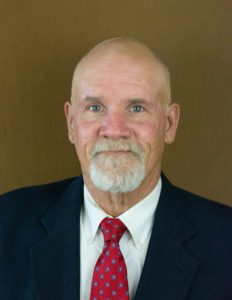There are many benefits to working for a small company. There are also many challenges, specifically surrounding hiring and training your safety personnel. We will cover a viewpoint that does not get much attention due to its perhaps small or limited application, but one that, being overlooked, leads frequently to a gap in safety programs.
Very specifically there are big box companies that have resources galore and staff to match the needs of the company. However, probably more prevalent are the smaller companies that do contract work for those larger companies. The needs of an HSE department are as varied as the sizes and needs of the companies they work for.
All companies in the oil and gas business are required to comply with various entities such as OSHA, MSHA, EPA, TCEQ, RRC, and other regulatory agencies—an alphabet soup of acronyms too numerous to mention. With that being said, the smaller companies have different challenges than the larger companies. Most small companies contend with ISNetworld in order to contract out for the larger companies.
The smaller companies face the obstacles of finding well rounded personnel, preferably certified in numerous areas of expertise and yet able to adapt to the needs of consistent growth. By the time you find the ideal candidate with certifications, degrees, and experience, the salary demands outweigh the budget allotted for the ideal candidate. Most small companies do not have a group or staff commensurate with the large companies.
So the talent pool for the smaller companies must include candidates with credentials that are perhaps too costly for those smaller companies to afford, or, if such can’t be found, the companies are left with someone who is not an exact fit. The ideal person would be familiar with health, safety, and environmental. Then additional experience in HR, management, training requirements, as well as some public relations and communication skills (written and verbal) as well! Plus familiarity with the industry and operations. By the time you tally up all the ideal requisites for that candidate, the price for the candidate goes up or the qualifications take a compromise.
So what is the strategy? The dynamics of finding the ideal candidate are daunting. If you get this far, you still need to assess leadership skills, discipline, organizational skills, business savvy, public relations skills, verbal skills—and the list goes on.
When you get to the final stages of hiring and the candidate that passes the litmus tests, it comes down to money. What are you willing to pay? How much is safety worth? It depends on if you’re talking to the CEO, HR executive, or the ones getting hurt, or OSHA.
The gist of this discussion is that smaller companies are usually at a disadvantage. Most small companies take the strategy of one individual in dual roles. If that’s the case, the training still needs to be formal. Plus that individual must have an insatiable desire to protect their employees.
Most safety professionals are able to wear numerous hats, philosophically speaking. The welfare of an employee, however, cannot take a second seat in priorities.
Another strategy often utilized is to subcontract a safety organization to take the roles. However, it usually ends up as a cookie-cut safety program to cover minimal needs and requirements.
Again, it should be based on the needs of the employees and on the requirements of the law. Some companies hire third-party safety companies (sometimes as a hood ornament) in order to meet minimum requirements for litigation laws and contractual obligations.
It would take a book to cover all of the strategies used by oil and gas company’s safety programs. It’s a shame that there are still some that have no formal safety program. Their program is just telling their employees to “work safe” before they head out.
Understanding the bottom line is the bottom line. As we all know, injuries and the lack of a safety environment adversely affect the bottom line. Conversely, a quality safety program is not inexpensive either. However, a quality safety program ensures the company’s revenue coming in the front door doesn’t go out the back door in the form of lawsuits and fines.
So yes, there are numerous ways to have a quality safety program. Yes, smaller companies have different challenges than larger companies. Both entities require a quality safety program. It may require dual roles for some companies. It is paramount, though, that the person doing dual roles has the same qualifications as any other safety professional. The investment will pay/save dividends in the short and long run.
So whoever is in the position and in charge of safety, can have dual roles. But his qualifications still have to be in line with the law. Have you seen the mortgage company commercial, where they say, “I’m pretty sure that those snakes aren’t poisonous”! It’s better to be certain.
I hope you have captured the essence of the intended message. And as usual, “It’s not how many hits you have in baseball that counts; it is how many times you reach home safely!” Be safe! May God bless America!
Dusty Roach is a safety professional based in Midland. He is also a public speaker on subjects of leadership and safety, and he maintains a personal website.











